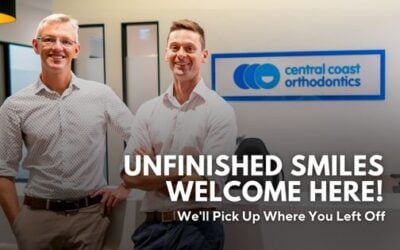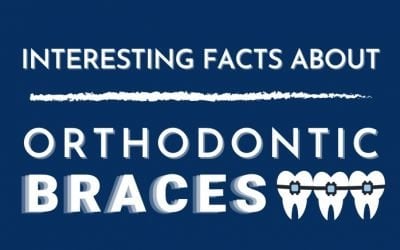Open Bite Problems and Orthodontic Treatment
What is an open bite?
An open bite is a type of malocclusion or misalignment of the jaw, where a person’s top and bottom teeth don’t touch when their mouth is closed. This may be caused by the shape of your jaw, or the upper and lower front teeth slanting too far outwards, or a tongue or finger-sucking habit.
Type of an open bite
An anterior open bite is the most common form of open bite. It occurs when the front incisors in the upper and lower jaw slant outwards, meaning they don’t touch when the mouth is shut. By contrast, a posterior open bite affects the position of the back molars and premolars. While it doesn’t cause a visible open bite, a posterior open bite means that the back teeth remain ajar when a person bites down, making it difficult to chew food properly. Less well-known forms of open bite include skeletal open bites, where genetics leads to irregular jawbone development, and dental open bites, caused by crooked or misaligned teeth.

Open bite symptoms
The most common symptoms of open bite include:
- A visible gap between the top and bottom teeth when a person closes their jaw
- The front teeth looking crooked, overcrowded or ‘sticking out’
- Speech problems, including a lisp or other form of speech impediment
- Difficulty biting and chewing
- Mouth breathing
- Excessive tooth wear, causing discomfort and potential fractures
- Abnormal facial appearance
- Tongue poking out when speaking or swallowing
What problems can cause an open bite?
An open bite can be caused by genetics, tongue position or poor oral habits – or a combination of all three. Poor oral and tongue habits often develop in early childhood, but these problems can lead to open bite in adulthood if not addressed. We explore the underlying causes of open bite in more detail below.
- Genetics. Skeletal abnormalities can cause the jawbones to grow irregularly rather than in parallel to one another. This can affect the shape and appearance of the face, and lead to open bites.
- Poor oral habits. Excessive sucking in childhood can lead to open bite if left unchecked. Common culprits are thumb or finger sucking, as well as overusing bottles and dummies. It’s best to discourage these sucking habits in your child by the age of three or four, before their permanent teeth grow in.
- Tongue position. Tongue thrusting – where a person frequently pushes their tongue between their teeth when speaking or swallowing – can lead to open bite. Incorrect tongue position is another common cause. This occurs when a person’s tongue rests in a ‘forward posture’ against their teeth, causing their front incisors to grow up and out. Again, these habits are most commonly seen in children, but they can lead to bite and speech problems later in life if not addressed.

How to fix an open bite
The treatment to fix an open bite depends on the type of open bite, as well as the age of the person involved. Your orthodontist will prescribe the best treatment method for your particular circumstances. Methods to fix an open bite include:
- Fix naturally. In children with baby teeth, their open bite may fix naturally if they stop sucking on fingers or dummies before their adult teeth grow in.
- Behaviour modification. In some cases, modifying behaviour – such as correcting tongue thrusting – may be sufficient to correct an open bite.
- Braces or clear aligners. Braces or clear aligners such as Invisalign are a mechanical treatment to correct open bite. They work by gradually realigning the position of the front and bottom teeth.
- Headgear or another orthodontic appliance. Used in combination with braces, headgear helps correct an open bite by working to realign the jaw. Your orthodontist may prescribe other devices such as roller appliances, tongue cribs, vertical chin cups or bite blocks depending on the type and severity of your open bite.
- Surgery. When a misaligned jaw is due to skeletal problems, orthognathic or jaw surgery may be recommended as a last resort. The surgery realigns the jaw bones by removing a section of the upper jaw.
To read the original article, click here.
DISCLAIMER:
The content has been made available for informational and educational purposes only. Central Coast Orthodontics does not make any representation or warranties with respect to the accuracy, applicability, fitness, or completeness of the content.
The content is not intended to be a substitute for professional personal diagnosis or treatment. Always seek the advice of your dentist or another qualified health provider with any questions you may have regarding a dental or medical condition. Never disregard professional advice or delay seeking it because of something you have read or seen on the Site.
Learn More About
Related Articles
Unfinished Smiles Welcome Here – We’ll Pick Up Where You Left Off
Is Smile Direct Club’s insolvency leaving your teeth realignment process stranded? As Invisalign Diamond Plus providers…
Interesting Facts About Orthodontic Braces
Wanting to get orthodontic braces but feeling unsure because you don't have knowledge about its...
Three Benefits of Invisalign
Did you know that aside from being an option for straightening your teeth, there are also benefits...
Metal Braces: Does This Traditional Dental Technology Have a Future?
Of all the medical professions, dentistry has always generated the most fear and continues to;...







